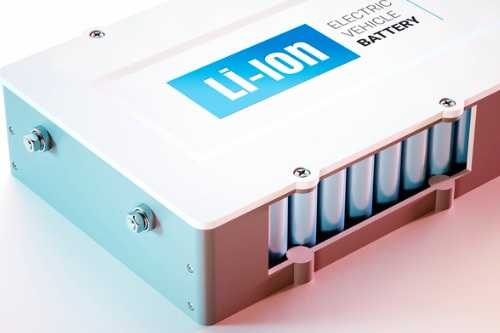10 ways to mitigate risk in use and storage of lithium-ion batteries

Authored by QBE Practice Leader Adrian Simmonds
As a leading business insurer, we are aware of the risks that lithium-ion batteries can pose in commercial and industrial environments
Rechargeable lithium-ion batteries were first introduced in 1991. Today, they’re everywhere.
Think about how many rechargeable devices are in your home and workplace – from the fitness tracker on your wrist, mobile phone, tablet, and laptop, to e-scooters and e-bikes.
With growing focus on sustainability influencing many – if not all – businesses, new applications for lithium-ion batteries are being embraced, including use in power tools, forklifts, and electric vehicles.
Battery energy storage systems (BESS) store energy from the sun, wind and other renewable sources and can therefore reduce reliance on fossil fuels and lower greenhouse gas emissions. Compared to its competitors, lithium-ion batteries have a high power-to-weight ratio, high energy efficiency, good high-temperature performance, and low self-discharge.
Fire risk
In normal use, lithium-ion batteries are stable and work as intended with no problems. However, these batteries are particularly sensitive to high temperatures and are inherently flammable, as well as being sensitive to cold temperatures and over-charging.
In certain circumstances – if the battery has been damaged by dropping, piercing or even heavy jolting, for example - a fault inside the battery can be triggered, causing it to short circuit. This can cause the battery to severely overheat very quickly and go into ‘thermal runaway’: an irreversible pathway to fire.
There are several technologies used for lithium-based batteries but the most used is referred to as NMC, where nickel, manganese and cobalt are used alongside lithium. Compared to other battery technologies, NMC batteries are more often involved in fires in vehicles, phones, laptops, e-scooters, and similar devices, as the technology is less stable when damaged and can be more volatile.
The other most common technology is referred to as LFP (lithium ferrous phosphate, also lithium iron phosphate). This technology is inherently safer, less prone to thermal runaway and less energetic in a fire. Many new buses, coaches, trucks, and battery energy storage systems use LFP type batteries.
Lithium-ion battery fires are incredibly dangerous and can be difficult to deal with because they release a flammable and toxic vapour which helps to further fuel the fire. Manual fire extinguishers are available that release a water-based solution of a material called vermiculate. This seals around the damaged battery to limit further fire spread but it does not halt the thermal runaway. The thermal runaway process will continue under the vermiculate and is waiting to accelerate again given the chance. This can reignite the fire even after hours or days or weeks of seeming to be contained.
An alternative for manual fire extinguishers is a Class B fire extinguisher (powder, foam, CO2) but these can only suppress the fire on the combustible materials around the battery, and the thermal runaway remains largely unaffected.
The benefit of using manual fire extinguishers is that it gives people time to escape whilst giving firefighters time to respond and to move the device to a safer location.
In addition to public places, lithium-ion battery fires are occurring in people’s homes. If a fire starts while using a personal mobility device (such as a e-scooter or e-bike), an electronic device (such as a phone or laptop) or while using an electric/hybrid vehicle, no one should attempt to extinguish the fire unless they’re trained.
Members of the public should move away and call the Fire Brigade. In commercial/industrial premises it is possible that some fire wardens are trained on specific emergency responses to lithium-battery fires – only trained personnel should act.
Those impacted, including by-standers who happen to be in the area, should evacuate and stay at least 10 metres away from the fire. This is important as the explosive force of a fire and thermal runaway release can throw hot metal and burning chemicals many metres.
Ten strategies to mitigate risk
As a leading business insurer, we are aware of the risks that lithium-ion batteries can pose in commercial and industrial environments. To mitigate this risk, the use of lithium-ion batteries and resulting fire risk is something that should be addressed as part of fire protection and emergency response arrangements for businesses.
A helpful – though not exhaustive – list of key actions for lithium-ion battery use includes:
- Establish a pre-defined Emergency Response Plan to tackle damaged or overheating lithium-ion batteries. Key employees should be trained before lithium-ion batteries are permitted on site.
- Avoid using lithium-ion batteries/battery powered equipment in extreme heat and freezing temperatures. Do not expose the battery to condensation, excessive humidity, or water. Employees should be advised to never stack heavy objects on top of batteries or devices containing batteries.
- Charge lithium-ion battery powered personal mobility devices or mobile plant (such as forklift trucks (FLTs) and powered pallet trucks (PPTs)) in a fire-rated non-combustible structure/room located outside the main building or attached to the external wall. Charging inside the main building requires a minimum four metres clearance from all combustibles and charging to be interlocked with localised or premises fire detection to shut off the power to the charger bay and raise a fire alarm.
- Ensure all charging is completed during working hours. If battery charging is undertaken out-of-hours, additional expensive control measures are recommended such as dedicated fire-rated cabinets or battery charging rooms, early alert off-gas detection and localised automatic fire suppression such as water mist protection to contain fire spread.
- If the battery is detachable, remove it from the equipment when it’s not in use for extended periods. Lithium-ion batteries not in use must be stored in a cool, dry location, in a charged state. In industrial or vehicle workshop premises, where the State of Charge (SoC) can be checked or changed, the batteries should be stored at 30% SoC if being kept for extended periods, and certainly no more than 50%. This is because the energy in a fire situation has been found to be significantly less at c.30% than if the SoC is above 50% and it makes fire-fighting much easier.
- Segregate lithium-ion batteries from other materials if bulk-stored in a warehouse, in a non-combustible, well-ventilated structure/room with sufficient clearance between the walls and the battery stacks. There should be clearance between batteries to allow air to circulate.
- Control floor stacking of lithium-ion batteries in designated areas with limited stack heights, footprints, and separation distances. Rack storage of lithium-ion batteries should not be permitted unless the building and the racks are fully sprinklered with solid metal horizontal and vertical barriers between each storage bay (utilise FM DS 8-9 Scheme A with horizontal and vertical solid barriers for every bay for an internationally accepted sprinklered rack storage protection standard).
- Use a hand-held IR gun to perform thermography inspection for any battery that has or may have sustained damage. Any deviation from the normally expected general temperature by 3°C or more on any individual lithium-ion battery package should be reported to management immediately so the pre-defined emergency response action plan can be initiated.
- Maintain a steel bin partially filled with water (or similar arrangements) at least three metres clear of the building, in readiness for any lithium-ion batteries with elevated temperatures to be placed into by a forklift truck. Other fire containment materials such as vermiculite or sand can be used to smother the affected battery. These measures might not stop the chemical fire from continuing but they will assist with fire containment.
- Never open, destroy or incinerate a lithium-ion battery as it may leak or rupture and release the ingredients they contain into the environment. Any swollen, dented or otherwise damaged batteries should be recycled or disposed of by a company qualified to do so
Risk management services for QBE customers
QBE helps businesses build resilience through risk management and insurance.
Depending upon the size and complexity of the business needs, QBE customers can access a wide range of risk management services, self-assessment questionnaires and risk management toolkits which are focused on the key causes of claims, and on generating action plans for improved outcomes - including protecting employees, reducing risk, and making claims less likely.
You can find out more about how QBE helps businesses to manage risk here.
Downloads
About QBE
QBE European Operations is part of QBE Insurance Group, one of the world’s leading international insurers and reinsurers and Standard & Poor’s A+ rated. Listed on the Australian Securities Exchange, QBE’s gross written premium for the year ended 31 December 2018 was US$13.7 billion.
As a business insurance specialist, QBE European Operations offers a range of insurance products from the standard suite of property, casualty and motor to the specialist financial lines, marine and energy. All are tailored to the individual needs of our small, medium and large client base.
We understand the crucial role that effective risk management plays in all organisations and work hard to understand our clients’ businesses so that we offer insurance solutions that meet their needs – from complex programmes to simpler e-trading solutions – and support them in minimising their risk exposures. Our expert risk management and rehabilitation practitioners focus on helping clients improve their risk management so that they may benefit from a reduction in claims frequency and costs.

